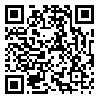BibTeX | RIS | EndNote | Medlars | ProCite | Reference Manager | RefWorks
Send citation to:
URL: http://rehabilitationj.uswr.ac.ir/article-1-523-en.html

 , Esmaeil Ebrahimi
, Esmaeil Ebrahimi 
 , Seyyed Ali Hosseini
, Seyyed Ali Hosseini 
 , Anoushirvan Kazem-Nejad
, Anoushirvan Kazem-Nejad 
 , Mohammad Ramin
, Mohammad Ramin 

Objective: The purpose of this study was to assess the facilitating impact of craniosacral therapy on inhibition of hypertonicity of the lower limb in children with spastic dipelgic cerebral palsy.
Materials & Methods: 100 children with cerebral palsy were studied and 36 children selected, aged 3 to 8 years, were randomly assigned to a control and an experimental group. Muscle tone was assessed using modified Ashworth scale, passive range of motion by goniometer, neurodevelopment level by Bobath scale. All children were Pre-Post-tested with in an interval of three months.
Results: A further finding of the analyses revealed that significant reduction was observed in hypertonicity of the hip adductors and the ankle plantar flexors. Significant increase was observed in passive range of motion of the hip abduction and the ankle dorsiflexion. There was found no significant difference of reduction in hypertonicity of the knee flexors, of increase in passive range of motion of the knee extensor, of improvement neurodevelopmental level. Meaningful relationship was observed between reduction hypertonicity of the hip adductors and improvement of the neurodevelopmental level.
Conclusion: It should be mentioned that in all above cases the was set at 5%. Implications for clinical O.T. are mentioned.
Received: 5/08/2010 | Accepted: 13/10/2015 | Published: 13/10/2015
| Rights and permissions | |
 |
This work is licensed under a Creative Commons Attribution-NonCommercial 4.0 International License. |



